By HANK BURDINE
There are a lot of noted pilots from Mississippi and especially the Delta, but a few stand out above all others.
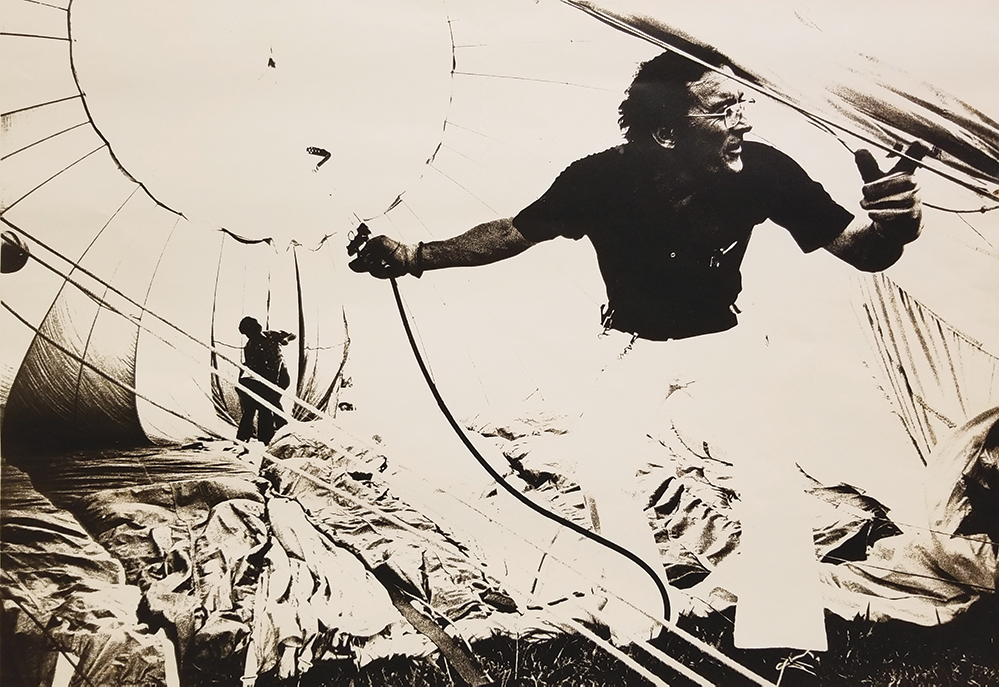
My introduction to the zaniness of Delta pilots came at the hands of one of the best of the best, Joe Call, J-3 Cub flying wizard, top flight instructor, and ag pilot extraordinaire, whose runway was a pecan orchard, the limbs having been trimmed up high enough for him to land and take off underneath the producing tops of the trees, right off of Old Leland Road in Greenville. My mama had asked Mr. Call to fly me over to Ashbrook Island in the middle of the Mississippi River in lieu of riding upriver in a fishing boat. Once landed and disembarked on a small strip of sand at the base of an abandoned levee, I still had a three-mile walk through the woods to camp—in the dark! But I got to know Mr. Call, and two years later I was slalom skiing at fifty-five miles per hour in front of five thousand people at the 1965 Fourth of July Greenville Ski Club Extravaganza on Lake Ferguson behind a Magnolia Cat racing boat powered by twin Mercury engines and piloted by cigar-chomping, river-racing expert Shot Johnson. I almost caught the long ski rope trailing behind Joe Call’s J-3 Cub on the second pass. Knowing he was to make only two passes, I was hunkered down and holding on for the embarrassing ride to the marina in front of all those people when I felt something on my back. Joe Call had looped around and laid that weighted rope right on my shoulder. Stunned that he even came back for a third pass, I reached but missed grabbing it to the chagrin of all the onlookers and especially myself!
My next introduction to flight came on top of the levee behind a Chevrolet van known as the Command Van and owned by Delta truck-selling Chevrolet dealer Trader John Weathersby from Indianola. Strapped into an old green Army parachute with slits cut in one side of the top for lift, and three or four running steps behind the moving van heading into the wind—you were airborne 100’ above the top of the levee. What a sight to behold!!!
One Sunday afternoon in 1973 we were flying the parachute around Miller Bend on a glorious blue-sky day with a new friend from Camden, Maine, Liz Hall, who was in town visiting her uncle, Big Hodding Carter. Liz had just returned from the Albuquerque International Balloon Fiesta in New Mexico. She told John, an accomplished pilot holding a commercial rating, about the hot air balloons. Trader John saw the potential for advertising, and the fun, in having a balloon. The next day he was in touch with Raven Balloons and within the week was the Southeastern dealer for Raven Balloons, having never even seen one, much less been in one. And then, my friends, the fun did begin!
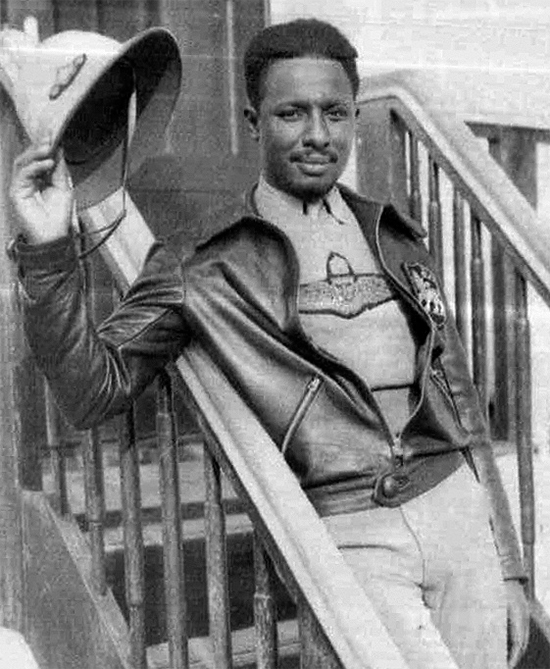

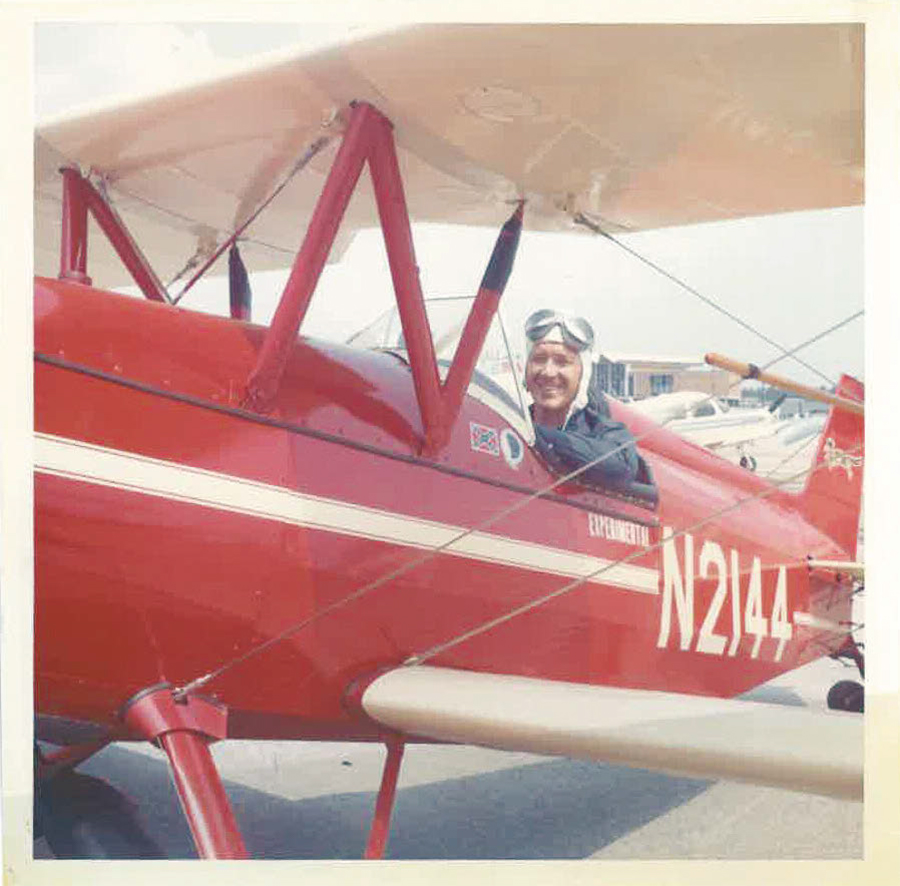

John bought a balloon and hired balloon instructor Bill Munday to come teach him to fly his balloon and to certify him. Shortly thereafter he convinced Munday to quit his job and go into business with him, using the balloon as a promotional tool for events, sales, grand openings, and various other deals. Soon, the Good Ship Faith was seen slowly floating over fields, car dealerships, and shopping centers all over the South.
One year Trader John co-sponsored a convention of the Mississippi Agricultural Pilots Association on the Gulf Coast, headquartered at one of Biloxi’s finest establishments, the Broadwater Beach Hotel. When you have a gathering of some of the wildest, boldest, fun-loving, yet, safest pilots in the country, the parties begin. John brought his balloon and tethered it to a fire hydrant in Mrs. Brown’s, the owner of the Broadwater, parking lot right on Highway 90 with a huge banner proclaiming, “Ag Pilots do it Lower and Slower.” The group was already in a little trouble after John’s friend from Gulfport, the dapper Tom Simmons, military ace and stunt pilot, showed up and led a gorilla on a rope through the crowds scaring the daylights out of guests as he jerked on the rope around the gorilla’s neck loudly exclaiming, “Pongo, COME!” One startled lady backed up so fast she actually fell into the pool as the gorilla cavorted about. Of course, it was Trader John dressed up in the authentic-looking gorilla outfit!
Mrs. Brown’s disapproval rating also came from the sky as one of the Delta ag pilots, instead of landing at the Gulfport-Biloxi airport, decided to show off and land his brand-new bright yellow 450 horsepower Grumman Ag Cat biplane, which needed only 650 feet of landing space, on the green area along the breakwater behind her Broadwater Marina where she had 118 covered yacht slips (this would allow the pilot a golfcart ride to the hotel instead of having to hire a taxi!). She was not amused, yet everyone else was, and once the plane was flown away after the convention was over, Mrs. Brown had the entire green space planted in palm trees. She was not to have “some fool ag pilot” land on her grass again!
It was not long before others learned about the hot air balloon craze, and festivals sprang up all over the Delta, including Indianola, Greenwood, and Greenville. We even put together a private four balloon fandango based out of my sister Jane Rule Burdine’s back yard in Taylor, Mississippi. At these, and other balloon events, I met balloon pilots David Eastland, Bill Munday, Dr. Steve Wooten, and Johnny Jennings, all crack pilots and bon vivants in their own rights! Fun was had and stories are still being told of some of the shenanigans and pranks pulled at these occasions. On one of the first flights out of Kay Johnson’s cow pasture south of Indianola, Trader John drifted silently and low over an old black gentleman’s vegetable garden as he was hoeing around and tending to his tomatoes. John leaned out of the gondola and said, “Hey, my friend, which way is New Orleans?” Startled, the gardener, having never seen anything like a hot air balloon before, tipped his hat back on his head as he pointed south and exclaimed, “Yonder way, LORD, yonder way!” I almost thought John would land the balloon and offer him a ride!
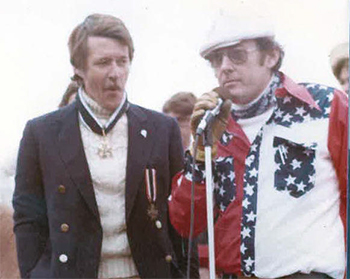

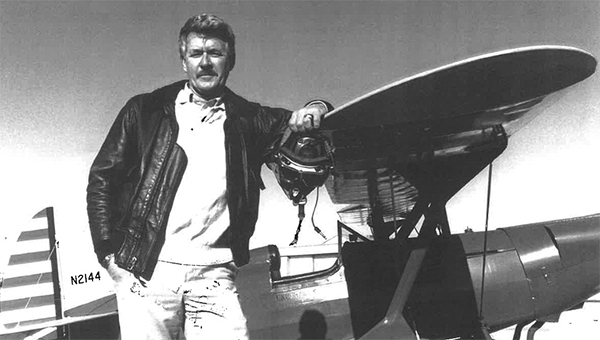

During this time, I met and became close friends with the dashing pilot and author Tom Simmons. Whenever we had a festival or air-related event, Tom would fly his stunt bi-plane in doing loops and barrel rolls as he approached the landing strip. He was an ace pilot who always showed up wearing a leather flight helmet, a long flowing silk scarf around his neck, burly khaki jodhpurs, and brown leather knee boots. A raconteur par excellence, Tom often relayed a story. “I got a call from a friend to deliver a very special passenger to a boat anchored twenty-five miles off the Gulf Coast in the Chandeleur Islands. I was gassing up a Piper Super Cub as a blue and white T38 supersonic trainer with NASA markings landed. My passenger was Stewart Roosa, former smoke jumper, test pilot, and then astronaut, who had just been to the moon and back! Once I delivered him to the island and the waiting yacht SLOW BOAT, I told him about a balloon festival being held in Greenville the next weekend, and he wanted to come! ‘That’s one way of flying I’ve never tried!’” Arriving the next weekend, astronaut Stewart Roosa was assigned as a co-pilot on a balloon and within a short time from flying twenty-five thousand miles per hour to reach the moon, he was skimming over the cotton fields of the Delta at five miles per hour. Simmons later would chuckle as he said, “I’ve brought a man from the moon to a balloon!”




One story Tom Simmons often told was of a young black man from Gulfport, Mississippi, who became enthralled with airplanes and flying at a very early age. His heart would race at the sound of an airplane overhead. He vowed to one day become a pilot. John C. Robinson went off to Tuskegee Normal and Industrial Institute in Tuskegee, Alabama, and graduated in the top of his class majoring in automotive mechanics in 1924. Realizing he could not reach his full potential in Mississippi at the time, he moved to Detroit to work as a mechanic in an auto repair shop, eventually moving to Chicago and opening his own garage and repair shop. Not being able to gain attendance in the Curtiss-Wright Flying School, he took a weekend job as a janitor there where he could schedule his last cleaning duties in a ground schooling class where he listened to the instructor, taking notes and copying illustrations after the class was over. The instructor noticed this and told him if he could pass his test, he would teach him to fly. John Robinson passed the test and was taught to fly, gaining his pilot’s license in 1927 from the Curtiss-Wright Flying School.
According to a book by Tom Simmons, The Man Called Brown Condor, the Forgotten History of an African American Fighter Pilot, John Robinson, along with partner Cornelius Coffey, formed aeronautics clubs, a flight school in Illinois, and was instrumental in starting the Tuskegee Air Institute, home of the Tuskegee Airmen, the first African-American military aviators in the United States Armed Forces. As the winds of war were brewing in Europe, Benito Mussolini was setting his sights on Ethiopia to revenge an embarrassing Italian defeat at Adowa in 1896. John Robinson was hired as personal pilot for “Emperor of Ethiopia, Ras Tafari, Haile Selassie (Power of the Trinity), Neguse Neguse (King of Kings) Elect of God and Conquering Lion of Lambs.” The young pilot moved to Addis Ababa.
During a solitary patrol on October 3, 1935, a small speck in the sky noticed three columns storming across the Mareb on a forty-mile front. The Italian Army was composed of “100,000 men, with 100,000 in reserve, 6,000 machine guns, 700 pieces of artillery, 150 tanks, 140 aircraft, several thousand motorized vehicles, and 6,000 mules. It was the beginning of a Fascist march that would end peace and engulf the world in a decade of war.” That small speck in the sky was an “obsolete French Portez plane, it’s engine throttled back to reduce noise. Its lone pilot, a young black man from Gulfport, Mississippi, looked down on the invading army and unwittingly was the first American to witness the prologue to the Second World War.”
Mississippi has had its share of pilots. Some of them stand out above all others.
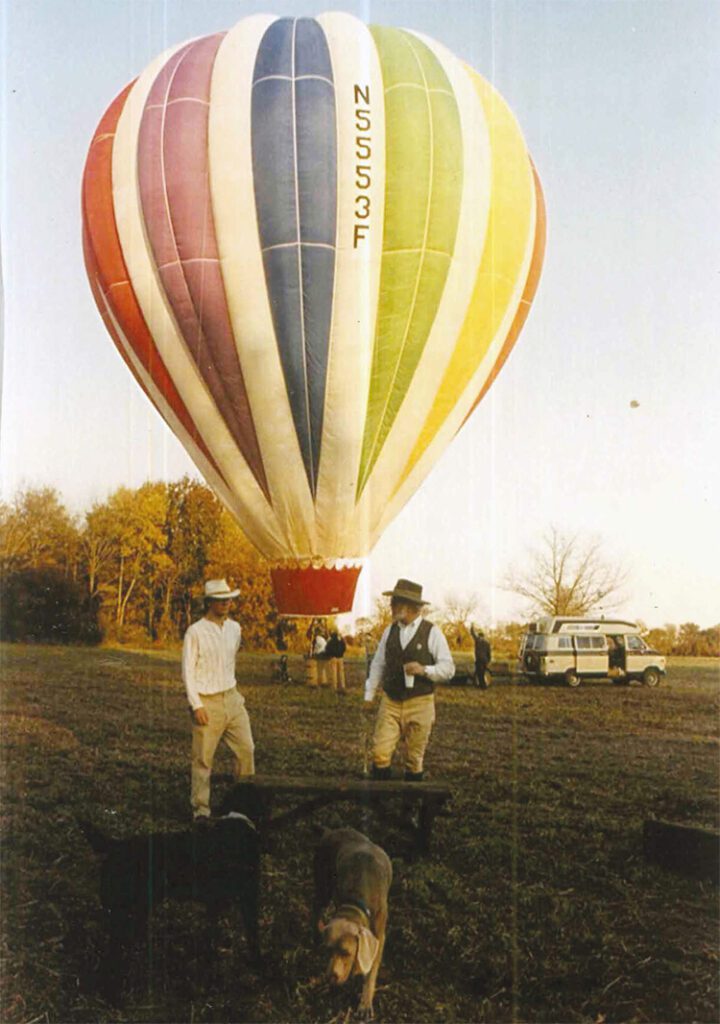




4 thoughts on “Delta Aces and Flying Wonders of Mississippi”
Thank you Uncle Red (Burdine) for the trip down memory lane. There was never a boring moment. Great people and good times. FYI, there was actually a movie made about the 1974 Albuquerque Balloon Festival (Youtube linke: https://www.youtube.com/watch?v=eeMJ6eSmyMQ&ab_channel=JohnMWeathersby).
Hanks story was spot on!!!
The Delta is an amazing place to live and our cast of legends and unique characters abound.
I met “Captain” Bill Munday in November of 1968. We were weekend warriors in the Clarksdale Army Reserve. Bill
owned a hot air balloon and I was hooked the thrill the moment I took flight, had to have one, no other options, just had to figure out how to make that happen.
On promotions all around the South, one eventually caught the eye of Trader John Weathersby….the moment was magical. Bill
John were the combination two personalities that created something that redefined a new gusto for life that I had never seen before! It was as if that moment was as magical as when Barnum met Bailey and that was the birth of the Big Top of the circus industry. The hot air balloon became Bill and John’s “Big Top”.
Hank Burdine’s wonderful article was a fantastic glimpse into the uniqueness of our life here in the Delta.
We are so fortunate to have writers like Hank tell our stories so well and a publication like Delta Magazine to present them for all to enjoy!
Johnny Jennings
Greenwood, Ms.
Your article on early flyers was great. My wife’s family was from Indianola. Her father and his two brothers were all in World War II. Her grandfather ran the ice house in Indianola. He was George Rives. The three boys were nicknamed Icy, Sleet, and Snow by the coach at school because of the ice house. George “Icy” Rives went into the Army as a medic and served in China and Burma. Julian “Sleet” served in the Navy. Jack “Snow“ Rives became a fighter pilot in Europe. He was quite dashing and a very good pilot. He was shot down in Germany and survived the crash but was executed by the Germans. After the war, his body was recovered and he is buried in Arlington cemetery. Julian and George made it back and graduated from Mississippi State. George was my wife’s father. They had a sister named lane. The coach named her “Baby Rain.” My wife Georgia and her three sisters have done programs on What Happened to Jack Rives.
Hi! Mr. Henderson, THANK YOU so very! very! much for your comment. I am interested in learning more about your family member, Jack “Snow” Rives.
I am an Indianola (MS) native. However, after graduating high school (Gentry) in 1969, I moved to Los Angeles. Years later while living in Georgia, I was enlightened to the legacy of the Tuskegee Airmen which included an Indianola (MS) fighter pilot, Lt. Quitman Charles Walker. During a strafing mission in November 1944, his plane was downed by enemy flak over Hungary. Perhaps both fighter pilots, Rives and Walker, paths crossed in the skies of Europe during escorts of B-17s and B-24s in WWII. Which Fighter Group and Squadron did Lt. Rives serve with during WWII?
Last, but not least, I am most grateful to Lt. Rives and Lt. Walker for their service. May they have a much deserved peaceful rest. sincerely, Zellie